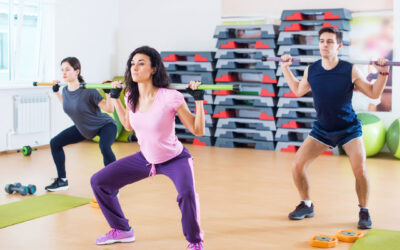
By Miguel J. Ortiz
Your shoulders are arguably your most vulnerable joint. They are responsible for overhead pressing, pushing, pulling and stabilizing when carrying. If you have any elbow or wrist problems the chances of it starting from the shoulder is extremely high, so why not work on developing them more? Interestingly enough people do work on their shoulders, but the basic physical therapy of internal and external rotations is just not enough. Look no further than some good ole reactive neuromuscular training (RNT) movement patterns to save the day.
Although the set up looks easy the work is much more challenging than you would expect. All these movements are very similar as they all have the same light band, but the varying set ups will provide slightly different activation for various purposes.
The first exercise is the Standing RNT OH Press. You will feel much more core and shoulder blade activation. During the RNT press your brain needs to recruit more muscles responsible for stability, like your core, in order to properly stabilize the shoulder. So, if you’re trying this exercise and you feel your hips drive forward to counter the pulling of the band then you can tell your core needs more work and that’s where you want to start before going into any more stressful overhead strength work. If you feel your upper trapezius activate too much and you can’t keep your arms straight over head, then you need to get closer or we might need to try this in a half kneeling position, which leads us to the next variation.
The Half Kneeling RNT OH Press. If your core stability is compromised and you’re having trouble activating your foundation properly to perform the movement then moving to a kneeling position is the way to go. The reason this is so helpful is because in this position you can activate the kneeling legs’ hip much easier than standing which will help with core strength, hence improving the overhead work.
For advanced athletes looking to increase their core and shoulder stability while challenging neuromuscular strength, I give you the Standing SA RNT OH Press. For me personally, this movement helped with better activation and highlighted the areas in my core and shoulder that needed assistance. When preforming the movement, I realized one side of my core was stronger than another as well as one shoulder was more stable than the other. So, when it came to programming my exercises or prepping for the rest of my workout this exercise really came in handy.
I would do these exercises before your main lifts as a core and shoulder prep or warm up, doing at least 2-3 sets of 8-10 reps. Have fun with your movements and stay active.










